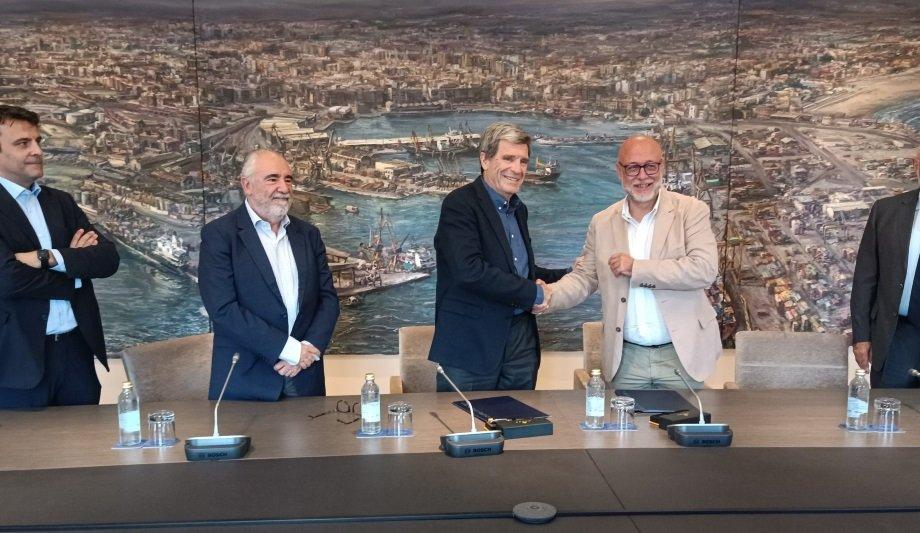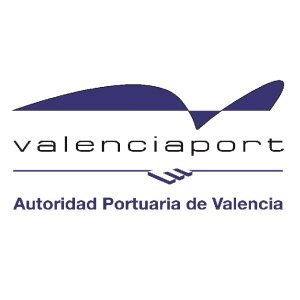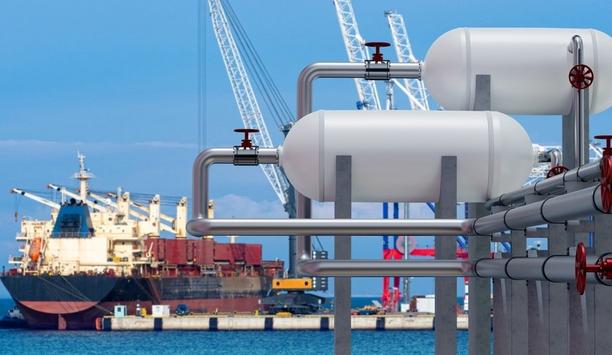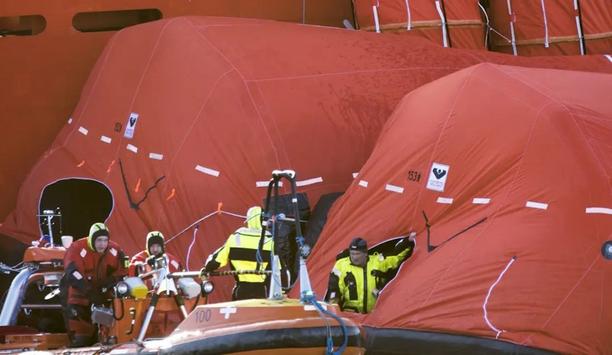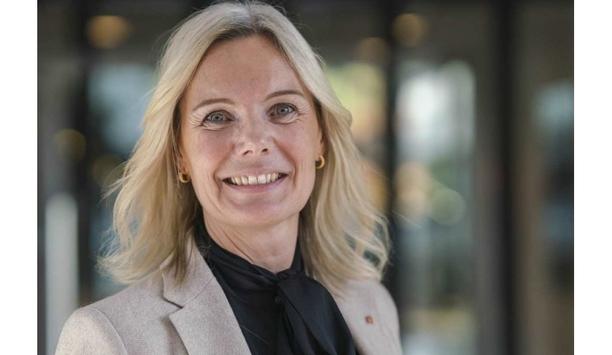Valenciaport is ceding an area of 257 m2 of the port public domain for the mooring of the Salvamar Pollux rescue vessel. Modules for offices and a warehouse for workshops or maintenance will also be installed.
Aurelio Martínez, President of the PAV: “The function of Valenciaport is to support one of the key services that we can have in all ports: security.” José Luis García Lena, SASEMAR director: “We have a very strong system in the Valencian Community. Four rescue vessels, a tug, a helicopter, a plane, and a strategic base for combating pollution.”
Valencia operations centre
A thousand people have been assisted by Salvamento Marítimo in the Valencian Community so far this year, especially from its Valencia operations centre located in the Port of Valencia. Rescues of human lives from pleasure boats, merchant ships, fishing boats or vessels linked to immigration. This has been a fundamental and essential task for seafarers for many years.
A thousand people have been assisted by Salvamento Marítimo in the Valencian Community
To reinforce this collaboration, the Port Authority of Valencia (PAV) and the Society for Rescue and Maritime Safety (SASEMAR) have signed an agreement with the director of SASEMAR, José Luís García Lena, and the president of the PAV, Aurelio Martínez.
Specifically, through this agreement Valenciaport authorises SASEMAR to occupy an area of 257 square meters of public port domain located in the area of the dock of nautical services in the port of Valencia, for the mooring of the SALVAMAR POLLUX rescue boat and for the installation of modules for offices and warehouse for workshop or maintenance.
Rescuing human lives
The president of the PAV pointed out that “The function of Valenciaport is to support one of the key services that we can have in all ports: safety. In this case, Maritime Rescue provides a plus for all types of vessels and problems that may arise. SASEMAR is a guarantor of safety, a function it has been fulfilling for many years. We have had a close relationship for a long time and with this agreement we are going to provide a location so that they can continue to carry out their duties and guarantee them everything they need to do so.”
We have 55 of these units distributed throughout the national territory"
For his part, José Luis García Lena, Director of Maritime Rescue in Spain, emphasised that “These facilities serve as support for our rescue vessel, a Salvamar, which is the core of our fleet in terms of rescuing human lives at sea. We have 55 of these units distributed throughout the national territory, four in the Valencian Community, one located here in Valencia, the rest are in Burriana, Jávea, and Alicante.”
Vessels linked to immigration
“Our link with the Valencian Region,” continued García Lena, “Is historical and we have many resources. We have a very strong system in the Valencian Community because apart from these 4 units, we also have a tug which is used to intervene in emergencies such as towing and other types of emergencies other than life-saving, which are more dedicated to the rescue of human life at sea, we also have a helicopter, an aeroplane and a strategic base for combating pollution located in Castellón.”
“As a result of this deployment, this year we have attended to around 1,000 people, and last year in total we attended to more than 1,500 considering the rescue centres located in Valencia and Castellón. The Valencia rescue centre is by far the one that attends to the most emergencies due to its characteristics. Most of them are recreational vessels, but we also attend to other types of vessels such as merchant ships, fishing boats, and even some vessels linked to immigration,” the SASEMAR director pointed out.
